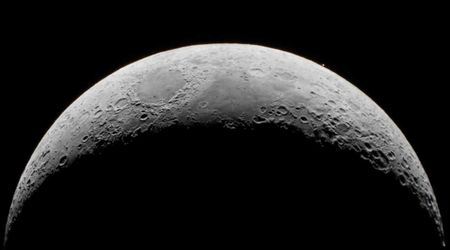When is the next full moon — know all about the Buck Moon of July

Stargazers are looking to the sky, eager to mark their calendars for the next full moon: July's Buck moon. This celestial event, with several other notable full moon displays and alignments, will grace the latter half of 2025. Following June's Strawberry Moon, the upcoming months promise captivating lunar spectacles. The full Buck Moon will illuminate the night sky on Thursday, July 10. Full moons consistently rise around sunset and set near sunrise, as they are positioned directly opposite the Sun, receiving its full illumination, as mentioned in the Almanac.

Most years feature 12 full moons, but roughly every 33 months, an extra 13th full moon appears, known as a Blue Moon. This occurs because the lunar cycle of about 29.5 days doesn't quite align with our 365.25-day Gregorian calendar, creating an approximate 11-day difference annually. A full moon happens when the moon is halfway through its orbit around Earth, appearing completely lit from our perspective. While there's an exact moment of full illumination, the moon will look full the night before and the night after, offering more chances for viewing.

July's full moon, the Buck Moon, derives its name from the new antlers that emerge on male deer's foreheads around this time of year, as bucks shed and regrow their antlers annually. This July full moon carries several other traditional designations: Native American tribes also refer to it as the "Thunder Moon" due to frequent summer thunderstorms, and sometimes the "Salmon Moon" or "Raspberry Moon." In Celtic traditions, it was known as the "Claiming Moon," "Wyrt Moon," "Herb Moon," or "Mead Moon," signifying the time for gathering herbs for remedies and spices. The Anglo-Saxons called it the "Hay moon" in recognition of the hay harvest in July, as per Time and Date.

Beyond July, August brings the full moon on Saturday, August 9, which comes with a rare planetary alignment. Skywatcher can spot Saturn, Venus, and Jupiter clusters together in the early morning. If clouds interfere, there's a second chance between August 11 and 13 to see what could be a lifetime-best conjunction of Venus and Jupiter, about 60 minutes before sunrise, per Almanac.
September begins with a full moon on the 7 at 2:09 PM. This "Corn Moon," named for coinciding with prime corn-harvesting season, will also feature a lunar eclipse visible in some regions. October brings the famous "Harvest Moon," shining brightly on Monday, October 6. This full moon is special because it rises very soon after sunset, providing extended bright moonlight that traditionally helped farmers with their harvests. It's also the first supermoon of 2025, appearing bigger and brighter because it's closer to Earth.
November will feature the second supermoon of this year, and notably, the biggest full moon of 2025. This supermoon will be exceptionally close to Earth, at just 221,817 miles (356,980 kilometers) away, making it visibly larger and brighter than any other full moon this year. The year concludes with a full moon on December 4, which is the third and final supermoon of 2025 and the last one until November 2026. This December full moon will also be the highest in the sky until 2042, offering an excellent viewing opportunity. Historically, December 6 also marks the feast day of St. Nicholas, when the moon will still appear full.









